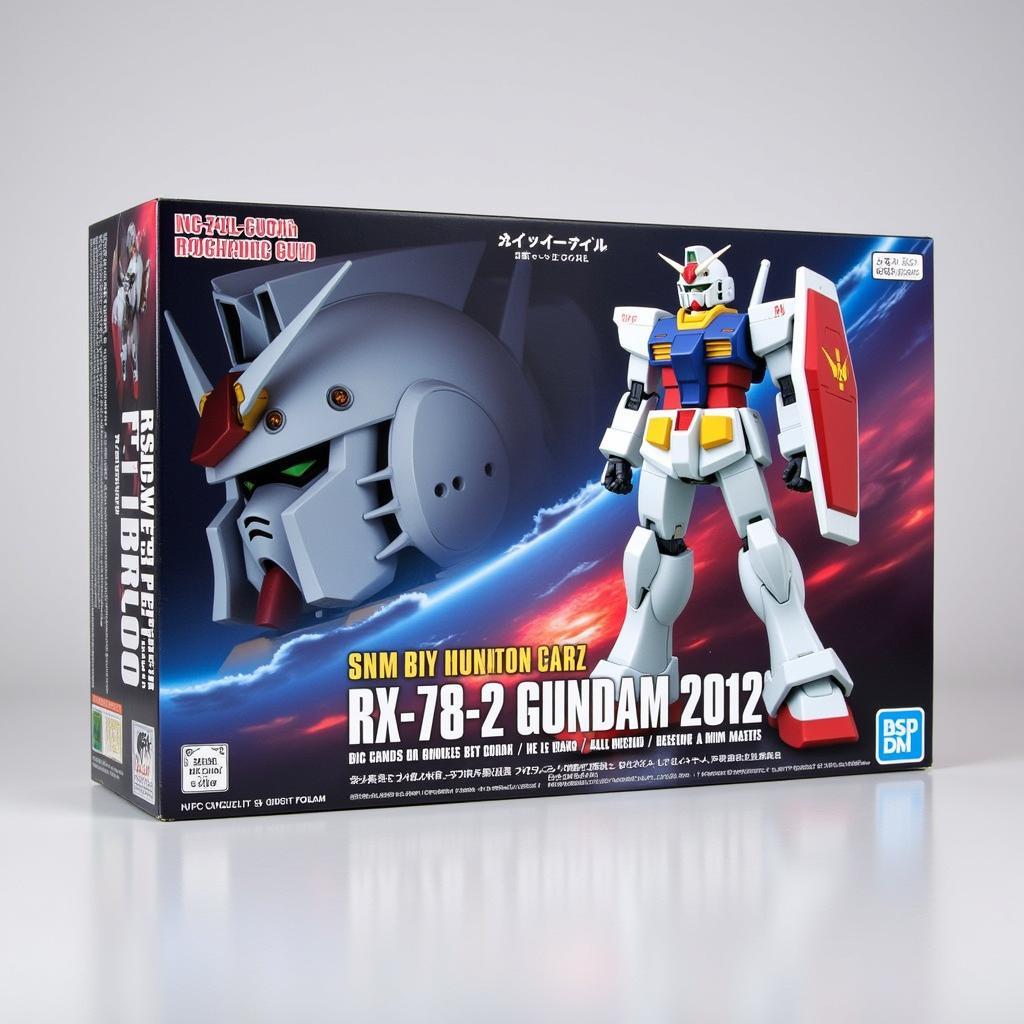Gundam model assembly, often referred to as “Gunpla,” is a rewarding hobby enjoyed by millions worldwide. This guide will walk you through everything you need to know, from choosing your first kit to advanced building techniques. Whether you’re a complete beginner or a seasoned builder, you’ll find valuable tips and tricks here to enhance your Gunpla experience.
Getting Started with Gundam Model Assembly
Choosing your first Gunpla can be exciting, and with so many options available, it can also be a little overwhelming. Start with a High Grade (HG) kit. These are generally affordable, easy to assemble, and offer a great introduction to the world of Gunpla. Don’t worry about specialized tools initially; most HG kits can be assembled with just your hands.
 First Gundam Kit: HG RX-78-2
First Gundam Kit: HG RX-78-2
Essential Tools for Gundam Model Assembly
As you progress, investing in a few basic tools can significantly improve the quality of your builds. Nippers designed specifically for plastic models will give you cleaner cuts and prevent stress marks on the plastic. A hobby knife is useful for removing excess plastic and nub marks. And finally, sanding sticks or files will help you smooth out any imperfections, resulting in a professional-looking finish.
Step-by-Step Gundam Assembly Instructions
Most Gunpla kits come with detailed instructions. Follow these carefully, paying attention to the part numbers and assembly order. Each piece is typically attached to a runner, which you’ll need to carefully detach using your nippers. After removing a part, use your hobby knife to trim away any remaining nub marks.
Understanding the Importance of Nub Removal
Nub marks are small pieces of plastic left behind after removing parts from the runner. Removing these nubs is crucial for a clean and polished look. Carefully cut the nub close to the part, then use a sanding stick or file to smooth the surface.
Advanced Gundam Building Techniques
Once you’re comfortable with basic assembly, you can explore more advanced techniques like panel lining, painting, and weathering. Panel lining involves using a specialized marker or paint to accentuate the details and recesses of the model. Painting allows you to customize your Gunpla with different colors and finishes. Weathering techniques can add realism by simulating battle damage or wear and tear.
Conclusion
Gundam model assembly is a fun and engaging hobby that offers endless possibilities for creativity. With practice and patience, you can create stunning and intricate models. So, grab a kit, gather your tools, and start building! Explore the world of Gunpla and unleash your inner builder.
FAQ
What is the best Gundam kit for beginners? High Grade (HG) kits are recommended for beginners due to their affordability and ease of assembly.
What tools do I need to assemble a Gundam model? Basic tools include nippers, a hobby knife, and sanding sticks or files.
How do I remove nub marks? Carefully cut the nub close to the part using nippers, then smooth the surface with a sanding stick or file.
What is panel lining? Panel lining is a technique used to accentuate the details of a model by applying ink or paint to the recessed areas.
Where can I buy Gundam model kits? Gundam model kits can be purchased online, at hobby shops, and at some toy stores.
What is the difference between High Grade (HG) and Master Grade (MG) kits? MG kits are generally larger, more detailed, and more complex to assemble than HG kits.
How long does it take to assemble a Gundam model? Assembly time varies depending on the complexity of the kit, but a simple HG kit can typically be assembled in a few hours.
Need help with your Gundam assembly or planning a trip to Hanoi to explore hobby shops? Contact us at Phone: 0372960696, Email: TRAVELCAR[email protected], or visit us at 260 Cau Giay, Hanoi. Our 24/7 customer service team is ready to assist you. We also offer 16-seater, 29-seater, and 45-seater vehicle rentals for airport transfers, sightseeing tours, and travel to various tourist destinations. Check out our other articles on [link to other articles on TRAVELCAR] for more information on travel and hobbies.

